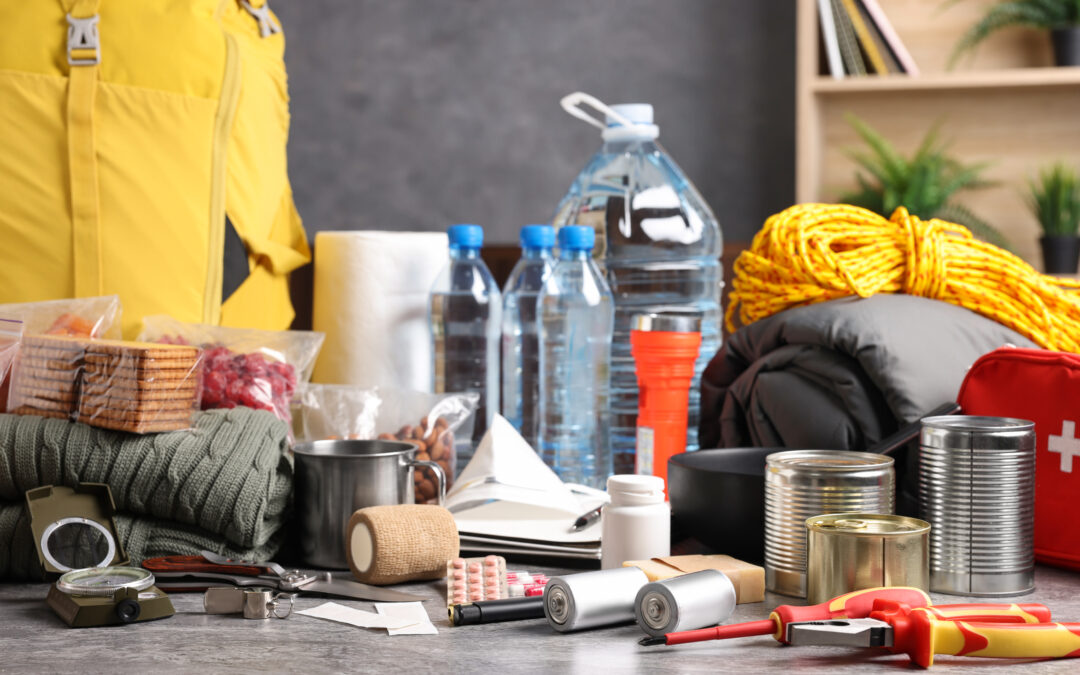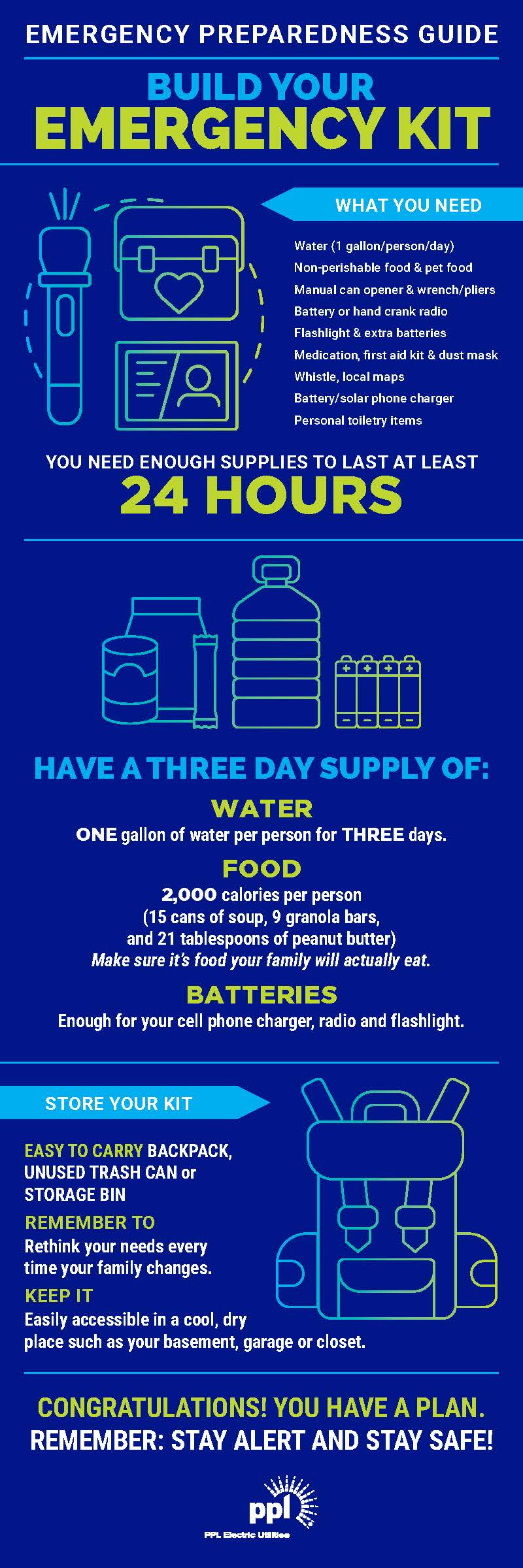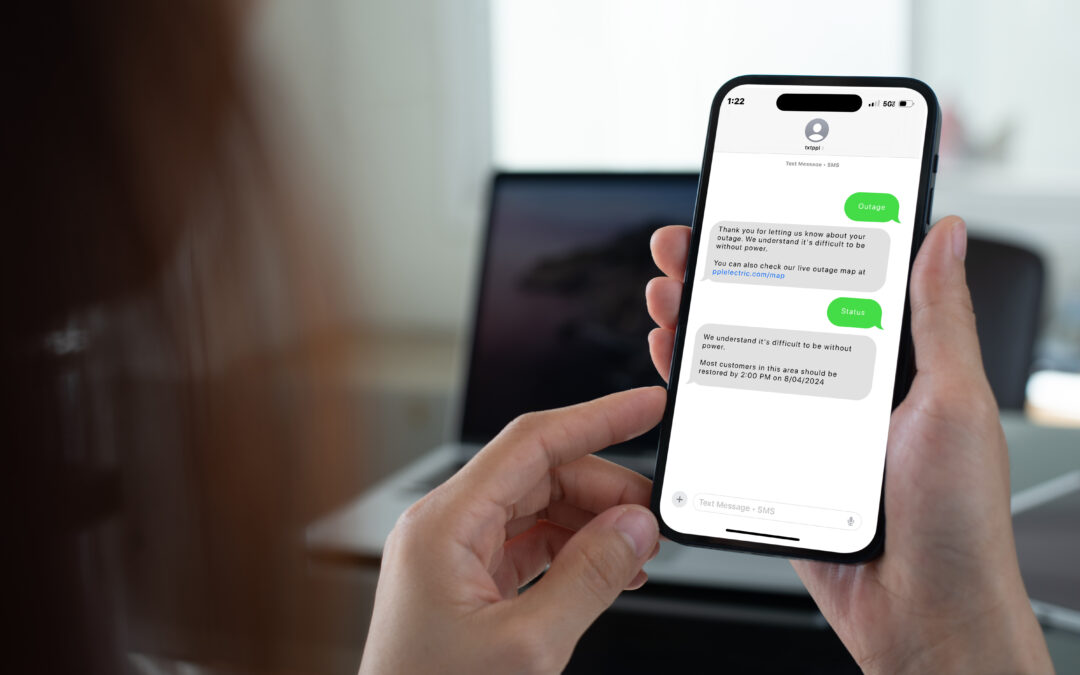
Sep 1, 2025 | Safety and Security
National Preparedness month is a great time to create and review your emergency plan so your family knows what to do during an emergency.
Does your family have a plan in case of a natural disaster or another emergency? You might be surprised to learn that many Americans still don’t.
We take steps every day to keep our loved ones safe. We childproof our homes, buckle up in the car and install smoke detectors. But are we truly ready for an emergency, like a power outage or a severe storm?
What would your family do if the power went out for several days? Do you have enough food, water and other supplies? Every family’s needs are different, and your plan should reflect that. For example, families with young children, pets or someone with medical needs may require extra planning.
Why planning matters
Having a plan in place before an emergency hits can make all the difference. It’s much easier to stay calm and focused when you’ve already thought through the details. Knowing where to go, who to contact and what to have on hand will help you keep your loved ones safe.
National Preparedness Month is a great time to review and update your emergency plan. Even if you already have one, check to make sure it still matches your family’s current needs.
Get started on your plan
If you don’t have a plan yet, now is the perfect time to create one. Ask yourself:
- Does everyone know who to contact and where to go if an emergency happens when you’re not home?
- Do you have an emergency kit with enough supplies for at least three days?
- Does everyone know how to stay informed with the latest news?
- Do you have backup power options, like a generator or battery packs, if an outage lasts longer than expected?
Resources to help you prepare
We’ve gathered essential information from trusted sources like FEMA, the U.S. Department of Homeland Security, the Red Cross and the U.S. Department of Health & Human Services. Our guide combines their best practices into one convenient place, making it easier for you to review and follow.
Key tips:
- Keep a paper copy of your emergency contacts: If your phone dies, you’ll still have access to important numbers.
- Use our checklist to build your emergency kit: It’s designed with all the details you need to be ready.
- Teach your kids what to do in an emergency: Help them stay calm and know what to expect.
Check out the infographics below for more detailed guidance on building your emergency kit and preparing your family.
National Preparedness Month is a reminder to make or update your emergency plan. Being ready helps protect not just you, but everyone who depends on you.


Sep 1, 2025 | Safety and Security
September is National Preparedness Month, and now is the perfect time to make sure you and your family are ready for the unexpected. When emergencies happen, having a well-stocked kit can make a stressful situation easier and safer.
Kit essentials
1. Flashlights and batteries
Have flashlights for everyone in your family and plenty of extra batteries. Flashlights are safer than candles, which can be a fire hazard. Keep one in each room so you’re not searching in the dark.
2. Food and water
Plan for at least three days’ worth of food and water. Stick with non-perishable items like canned goods, granola bars, or dried fruit, and don’t forget a manual can opener. For water, store at least one gallon per person per day for drinking and basic needs.
3. First aid kit
Be ready for minor injuries. Stock bandages, antiseptic wipes, and any prescription medications your family needs. Adding common medicines like pain relievers, cold medicine, and allergy medicine is also helpful.
4. Battery-powered or hand-crank radio
Information is critical during an emergency. A portable radio can keep you updated if the power is out. Be sure to have extra batteries on hand.
5. Blankets and warm clothing
Weather can be unpredictable. Keep extra blankets, sleeping bags and warm clothing like hats and gloves in your kit. Even in summer, a blanket can add comfort.
6. Hygiene items
Good hygiene keeps you healthier in tough times. Include hand sanitizer, wet wipes, toothpaste, toothbrushes, deodorant and other basics. If you have babies or small children, add diapers and wipes.
7. Important documents
Make copies of key documents such as insurance policies, medical information and birth certificates. Store them in a waterproof container along with a list of important phone numbers.
8. Portable phone charger
A portable charger will help you stay connected. Keep it charged so it’s ready when you need it.
9. Cash in small bills
In some emergencies, ATMs and card readers may not work. Having cash on hand — especially small bills — can help you buy supplies or fuel when electronic payments aren’t available.
Putting it all together
Once you’ve gathered your items, store them in a sturdy container like a plastic bin or duffle bag. Keep the kit in an easy-to-reach spot, and make sure everyone in your household knows where it is.
With your emergency kit ready, you’ll have peace of mind knowing you’re prepared for the unexpected. Stay safe, and be ready for whatever comes your way!


Jun 22, 2025 | Safety and Security, Storms and Outages
We’ve made it easy for you to stay connected and access the information you need during an emergency. Here are some reliable ways to stay updated when sever weather is in the forecast:
- Report an outage
If your power goes out, report the outage by texting “Outage” to TXTPPL (898775), by visiting pplelectric.com/outage or by calling us at 1-800-342-5775.
- Stay connected
Customize your alert preferences at pplelectric.com/alerts to receive real-time updates on your power status. Choose to receive notifications via text, email, phone or any combination of the three so you’re always informed. You can adjust your settings anytime to match your communication preferences.
- Monitor our interactive outage map
Want to see what’s happening in your area? Visit our Outage Map to view current outages, affected areas and get estimated restoration times.
- Connect with us on social media
Stay connected and following us on social media for the latest news, safety tips andinformation.s and outage news. Follow us on X (Twitter), Facebook and Instagram to receive real-time updates and connect with our customer service team. Social media also helps you stay connected with your community during widespread outages.
- Keep your devices charged
Smartphones and tablets are essential lifelines during emergencies. Ensure your devices are fully charged before anticipated storms and consider investing in a power bank or portable charger as backup. This ensures you can stay connected to receive alerts and communicate with loved ones.
Power tip: Enable battery-saving mode and reduce screen brightness to extend your device’s battery life during outages.
- Have a battery-powered or hand-crank radio
A battery-powered or hand-crank radio provides reliable access to information, especially when cellular networks are congested or unavailable. Tune in to local news stations for weather updates, emergency instructions and restoration timelines. Remember to keep extra batteries in your emergency kit.
- Create an emergency contact list
Maintain an updated list of important phone numbers, including utilities, emergency services, medical providers and family contacts. Keep physical copies in multiple locations where you can easily access them during an outage.
Safety hint: Store this information in a waterproof container in your emergency kit, and also keep a copy in your vehicle.
Be prepared, stay connected, stay safe
By implementing these strategies, you can remain informed and connected during unexpected power outages. Remember that preparation is key to navigating emergencies safely and confidently.





